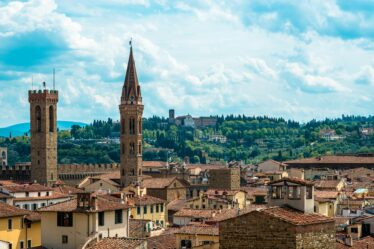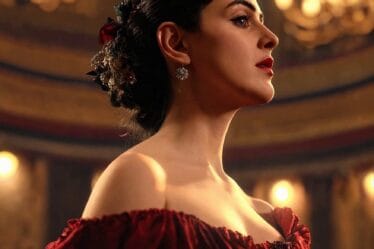
Talking about Orsanmichele is usually reductive… The stories that pervade this structure, and the symbols that are sprinkled throughout it, are so many that an entire volume may not be sufficient to describe them. In the seventh century, a tiny church dedicated to San Michele Arcangelo was built on the site of the former female monastery dedicated to San Michele, which had huge plots of land cultivated with vegetable gardens. Now, it is generally known that the Florentines’ attitude toward crippling names has been established over the years, and thus, the church born in the nuns’ garden quickly gained the name of San Michele in the garden, “Orsanmichele”.
The process of contracting the name in Orsanmichele was straightforward. The church was demolished by decree of the Municipality in 1240, and in 1284 it was decided to use the clearing to construct a lodge that could shelter the merchants of Biade and Granaglie and their products while negotiations were taking place. The architect in charge of this project was our ever-present Arnolfo di Cambio. Arnolfo created a basic loggia with brick pillars, a wooden roof, and a sloped gutter. To preserve the memory of the church that once existed there, the figure of San Michele Arcangelo was frescoed on one of the columns, while a Madonna dubbed “Madonna del Pilastro” was painted on another, to whom numerous miracles were credited. As a result, he became a revered figure known as Madonna delle Grazie. A “Company of the Blessed Virgin pure Madonna Santa Maria di San Michele in the vegetable garden” was even formed, thankfully, much more simply “Laudesi Company”; this company was staffed by eight officers, the captains of Orsanmichele. Their sign was the three “OSM” letters in gold on a blue background, which may still be found in the church today. Because of political tensions, a massive malicious fire destroyed a huge portion of Florence’s center in 1304, including the Loggia di Orsanmichele. In 1337, the Municipality decided to construct a new building that would serve as a storehouse for grain storage while also protecting the place of veneration, which had previously housed the fresco of the Madonna della Thank you. The image of the Madonna was destroyed and replaced by one painted on a table by Bernardo Daddi in 1347, which was then set in the magnificent tabernacle carved by Andrea Orcagna, which we can still see in all its glory today.
The edifice was built by three architects commissioned by the art of silk: Francesco Talenti, Benci di Cione, and Neri di Fioravante. The Loggia’s pillars were assigned one to each of the arts, with the protector of the organization to which he had been appointed painted on each. If the lower floor functioned as a loggia, the higher floors served as wheat warehouses. Some of the pillars have openings that connect directly to the upper levels via a duct drilled into the pillar. When the bakers went to the loggia to acquire the wheat, once the quantity and price had been agreed upon, they bound their bags to these slits, and the expected wheat was dispensed from the upper floor, causing it to descend through the duct.
The higher floors’ deposits included not only wheat, but also other goods and, of course, wine.
After the crisis triggered by the black plague, in 1360, the works of Orsanmichele, which had been interrupted, resumed and, by virtue of the many miracles attributed to the Madonna delle Grazie, especially in the pandemic period, it was decided to buffer the arches of the loggia, creating Great trifores with intertwined arches, and the loggia became the church we see today, dedicated to the Madonna and, after the expulsion of the Duke of Athens, which took place on 26 July 13. Niches were made on the outside of the three-way intersection, and they were adorned with statues of the sacred protectors of the numerous artistic corporations.The top artists in Florence were commissioned to create these statues.
The figures in the niches are made of marble and bronze, and the disparity is not accidental.
Minor arts have marble statues because labor is less expensive; big arts have bronze statues, which are more expensive.The stone and timber masters’ niche features four statues, representing the patrons’ four martyrdoms. In this context, there is a curiosity to share: Nanni Di Banco, who was in charge of sculpting the statues, did so without regard for the limited space of the niche where they had to be placed.
When it came time to place them in the niche, he realized they would never fit. He then turned to his buddy and business colleague, Donatello, for guidance on how to correct the problem. Donatello, amused, told him that if Nanni had paid a meal for him and all of Bottega’s young people, he could have solved the problem in four and four. In Nanni, he did not appear to be telling the truth and used those days to do some unfinished business. Donatello began to “smoot” the sculptures, properly arranging their shoulders and arms so that, when he was completed, the statues approached each other, entered precisely into the niche area, and it almost appeared like one saint’s hand was resting on another’s shoulder. This tabernacle was well-known, to the point where the street was known as route dei four saints for a while.Sculpted symbols can be seen in the four corners of the Orsanmichele structure, albeit they are tragically in ruins.It represents the four seasons symbolically: dry brushwood in winter, blossoming branches in spring, wheat spighe in summer, and grape bunches in autumn. Between Orsanmichele and the Palazzo dell’Arte della Lana, an elevated passageway connects the two buildings at the first floor level. In 1569, Cosimo Instaò established the notarial archive on the top floors of Orsanmichele, entrusting the conversion of the chambers to harm. Bernardo delle Girandole also constructed the bridge that connects Orsanmichele’s first floor to the stairway in the Palazzo dell’Arte della Lana during the time. Today, this represents entry to the Orsanmichele Museum.



